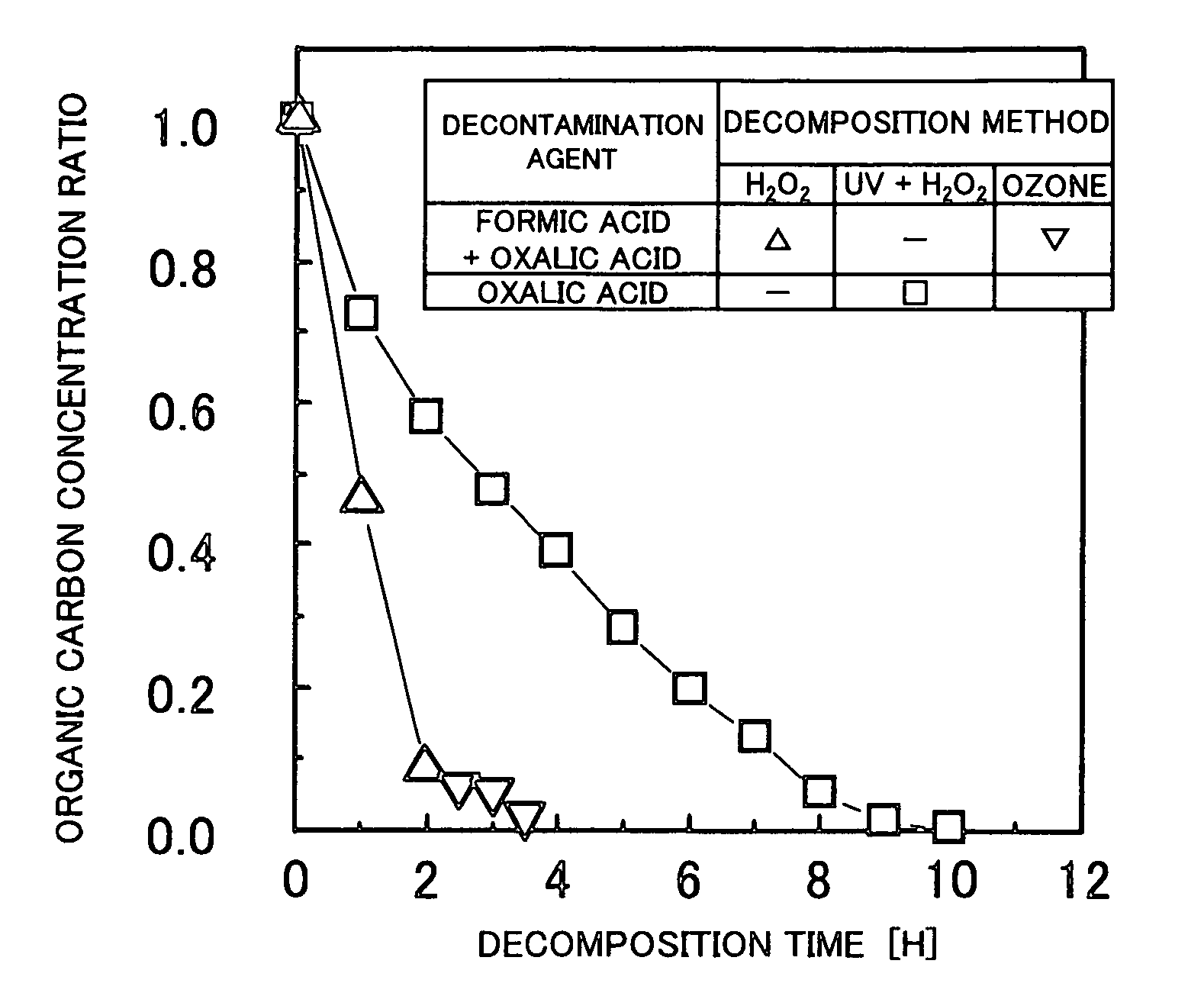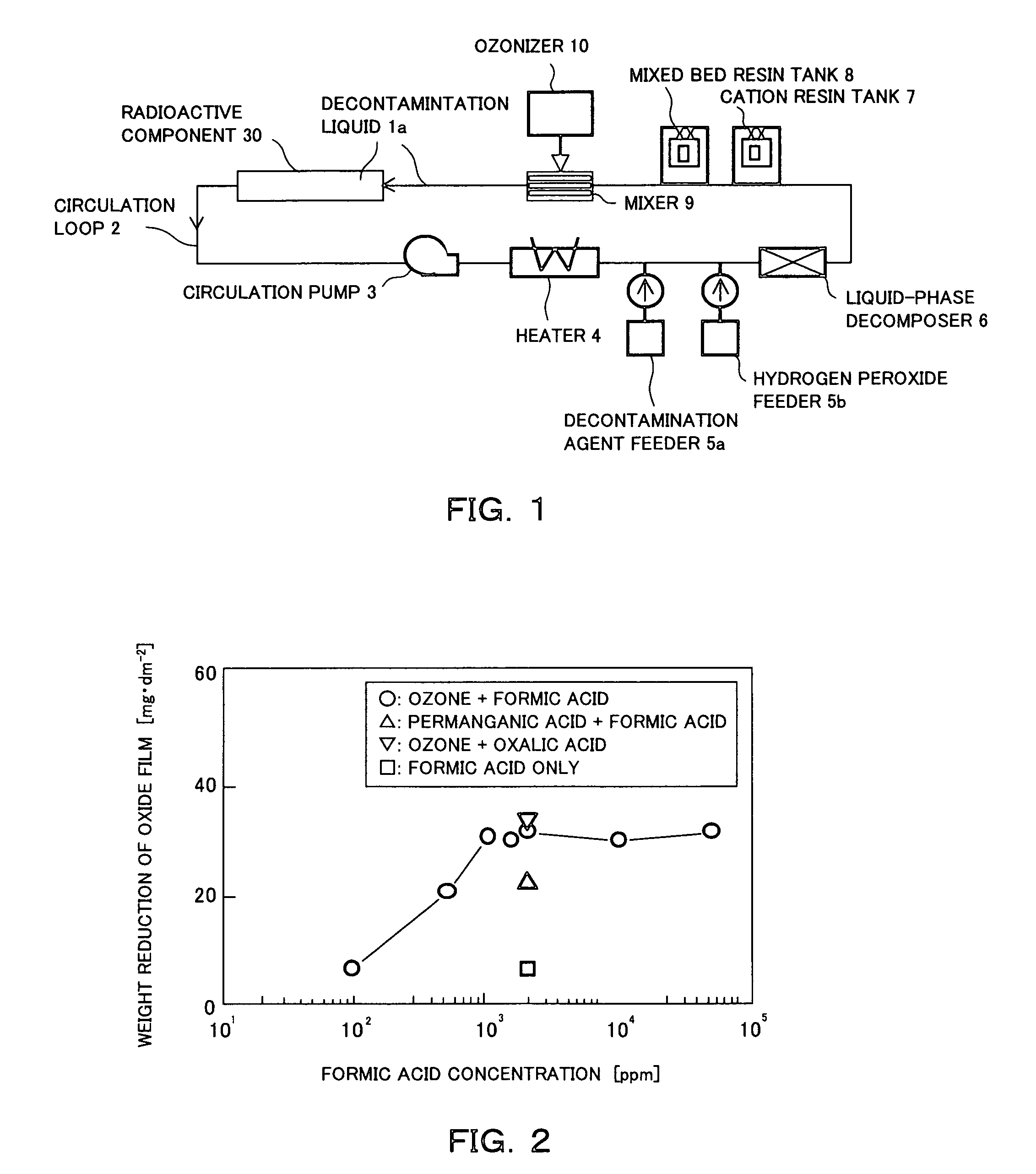System and method for chemical decontamination of radioactive material
a radioactive material and chemical decontamination technology, applied in the direction of nuclear engineering, nuclear engineering problems, cleaning using liquids, etc., can solve the problems of increased device construction cost, longer decontamination work time period, and inability to use formic acid in decontamination
- Summary
- Abstract
- Description
- Claims
- Application Information
AI Technical Summary
Benefits of technology
Problems solved by technology
Method used
Image
Examples
first embodiment
[0038]A first embodiment of a method and a system for chemically decontaminating radioactive material according to the present invention are now described with reference to FIGS. 1 through 4. In this embodiment, the oxide layer (or film) on the surface of the radioactive component is dissolved, but the base metal of the radioactive component is not dissolved and remain intact.
[0039]FIG. 1 shows a first embodiment of a system used for chemically decontaminating radioactive material according to the present invention. The system is used for chemically decontaminating radioactive component (or contaminated component) 30 such as a pipe section which has a passage for decontamination liquid 1a to pass through. The system includes a circulation loop 2 which is connected to the radioactive component 30 to be decontaminated for circulating the decontamination liquid 1a. The circulation loop 2 includes a circulation pump 3, a heater 4, a decontamination agent feeder 5a, a hydrogen peroxide f...
second embodiment
[0068]A second embodiment of a method and a system for chemically decontaminating radio active material according to the present invention are now described with reference to FIGS. 5 through 11. In this embodiment, not only the oxide layer on the surface of the radioactive component but also the base metal of the radioactive component may be dissolved.
[0069]FIG. 5 shows the second embodiment of the system for chemically decontaminating radioactive material according to the present invention. This system is used for chemically decontaminating spent component which has been replaced by a spare component at a periodic inspection of a nuclear power station. The system includes a decontamination tank 1 for storing decontamination liquid 1a. The system also includes a circulation loop 2 which is connected to the decontamination tank 1 for circulating the decontamination liquid 1a. The circulation loop 2 includes a circulation pump 3, a heater 4, a decontamination agent feeder 5a, a hydrog...
PUM
| Property | Measurement | Unit |
|---|---|---|
| temperature | aaaaa | aaaaa |
| temperature | aaaaa | aaaaa |
| temperature | aaaaa | aaaaa |
Abstract
Description
Claims
Application Information
 Login to View More
Login to View More - R&D
- Intellectual Property
- Life Sciences
- Materials
- Tech Scout
- Unparalleled Data Quality
- Higher Quality Content
- 60% Fewer Hallucinations
Browse by: Latest US Patents, China's latest patents, Technical Efficacy Thesaurus, Application Domain, Technology Topic, Popular Technical Reports.
© 2025 PatSnap. All rights reserved.Legal|Privacy policy|Modern Slavery Act Transparency Statement|Sitemap|About US| Contact US: help@patsnap.com



